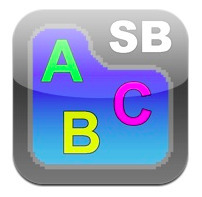 Our
Our claim to fame these days seems to be our commercial about assistive technology starring Carolyn, Amy, and I. We kept it simple and our movie had a "Wild West" theme. As we marched off ten paces we spun around and drew out our smart phones. The result was a rather campy send-off of gun battle. The salvo in this gun battle was the sharp stings of texts being sent back and forth.
Perhaps we could have done more to educate the general populace on the varieties of assistive technology, but we decided that the "less-is-more" approached mixed with a liberal dose of humour was our best bet. In saying nothing, but demonstrating that technology creates a new "Wild West" we hoped that it would be understood that assistive technology can be used as a level playing field.
To create our movies we used RealDirector. In the process of utilizing this program we discovered the amount of literacy, problem solving, and teamwork that it requires. As Barbara often says, "This is huge."
In creating our project we had to consider the end-product and work our way back. We had to consider what we were trying to achieve. We had to consider not only the needs of the audience, but the focus of our message. This also required story-boarding as we determined the beginning, middle, and end of our story.
Our dramatic personas had to be carefully considered. Our facial gestures, body positions and actions all had to tell a story. As Amy filmed, we had to work collaboratively together.
And finally, in the editing process we had to consider the use of labels, transitions, and music to help achieve our final product.
During our post-production sharing we discussed the processes and uses for ReelDirector. Some of my thoughts on this are:
Processes: Critical thinking
problem solving
literacy (speaking/listening, reading - non-fiction reading skills as you delve into internet sites and determine what is useful info., etc, and writing - text on movie)
drama
problem solving
working effectively with others and utilizing class time together
technology (another form of literacy?) - accessing features, layering of features - text boxes, slides, music, transitions, editing, etc.
Uses for ReelDirector: Social Stories
Infomercials/Reports (e.g. Weather Unit in Grade 5)
Review of material (for students who need reminders of how to do the many steps within long division for example)
Showcase Events (Curriculum Night)
Assemblies (showcasing classes at work, students, etc.)
How-to videos (What goes in the recycling bin?)
I should note that in my own classroom I already use my own equipment (it's just easier to access) and make movies with my students. I tend to choose students initially that I am trying to reach who might have behaviour issues or are reluctant readers or writers. It never fails to amaze me how they find features within my movie editing program and are so willing to engage in the process.
I have learned from just making movies/infomercials, etc. in my class that my students know much more than I usually anticipate and that they are just looking for a format that reaches their interest level and creativity.










